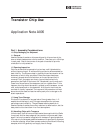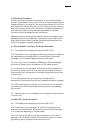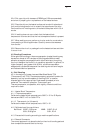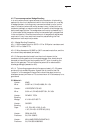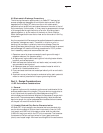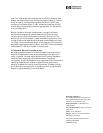
www.hp.com/go/rf
For technical assistance or the location of
your nearest Hewlett-Packard sales office,
distributor or representative call:
Americas/Canada: 1-800-235-0312 or
(408) 654-8675
Far East/Australasia: Call your local HP
sales office.
Japan: (81 3) 3335-8152
Europe: Call your local HP sales office.
Data Subject to Change
Copyright © 1993 Hewlett-Packard Co.
Obsoletes 5091-8802E
5968-3242E (1/99)
used. The S-parameter data, as presented in HP chip transistor data
sheets, includes the bond wire inductance (approximately 0.7 nH per
wire), microstrip line end-effect capacitance (about 0.02 pF) and
microstrip line losses (about 0.1 dB). A designer modeling the chip
should adjust these parasitic elements appropriately for the specific
circuit configuration.
Bipolar transistor chips are characterized in a slightly different
configuration because the substrate/backside of the chip is the
collector and the chip is mounted on the output 50 ohm line. The
emitter pad (or multiple pads, if used) is bonded to ground via holes
through the alumina substrate and the base is connected to the input
line. Again, bond inductances (about 0.5 nH base and 0.2 nH emitter),
end-effect capacitances (about 0.02 pF) and 0.025" alumina microstrip
losses (about 0.1 dB) are included in the chip data.
2.0 Heatsink Material Considerations
Although a detailed evaluation of device heatsinking is beyond the
scope of this application note, some comments on the topic are in
order. In general, for small signal devices the DC power dissipation
levels are low enough that the heatsink material is relatively
unimportant. As device dissipation levels approach 250 milliwatts and
operating temperatures increase, a higher thermal conductivity
material is needed for the chip mounting surface. The best choices,
given fabrication constraints for a particular circuit, are gold plated
copper or gold plated beryllium oxide (BeO).



